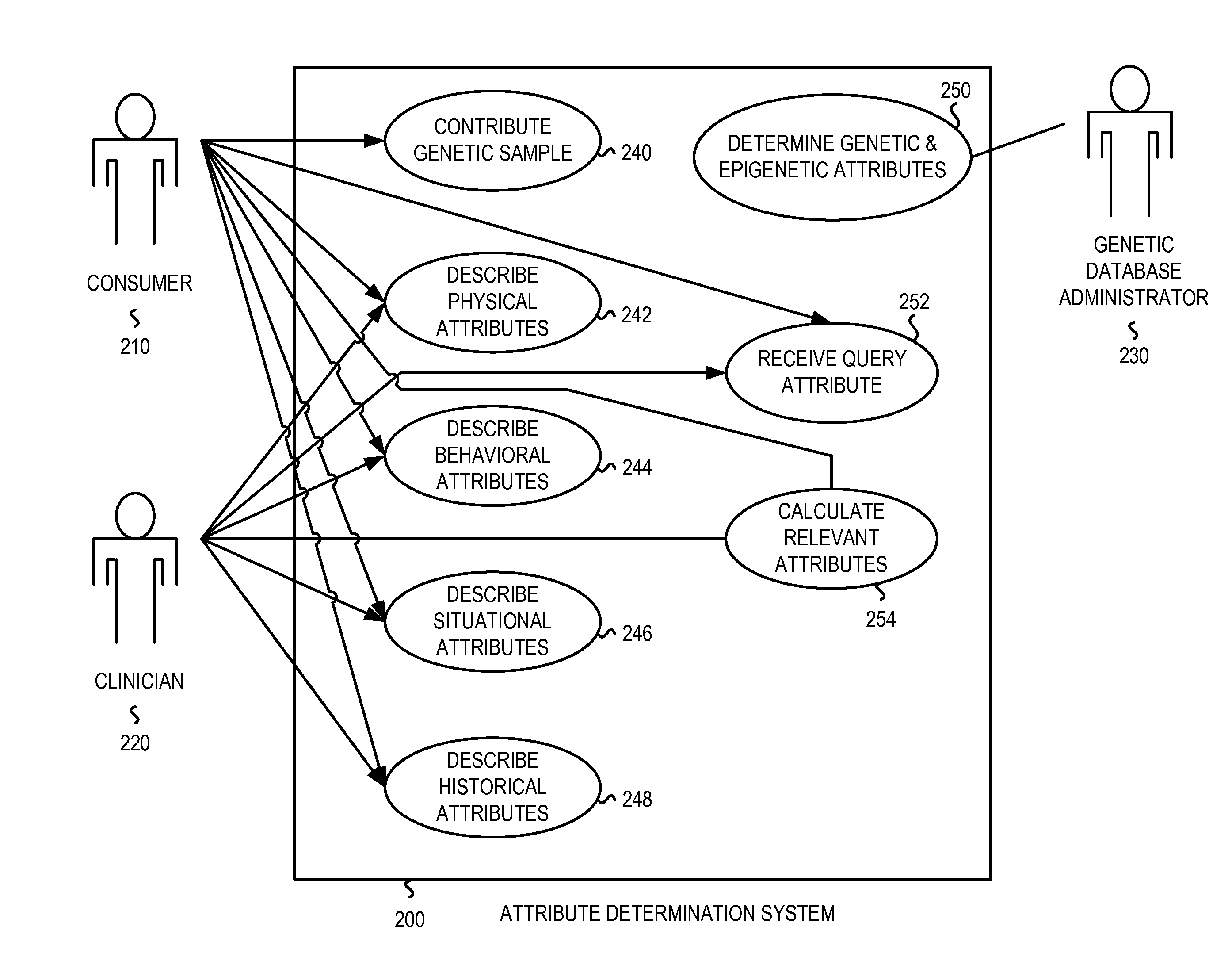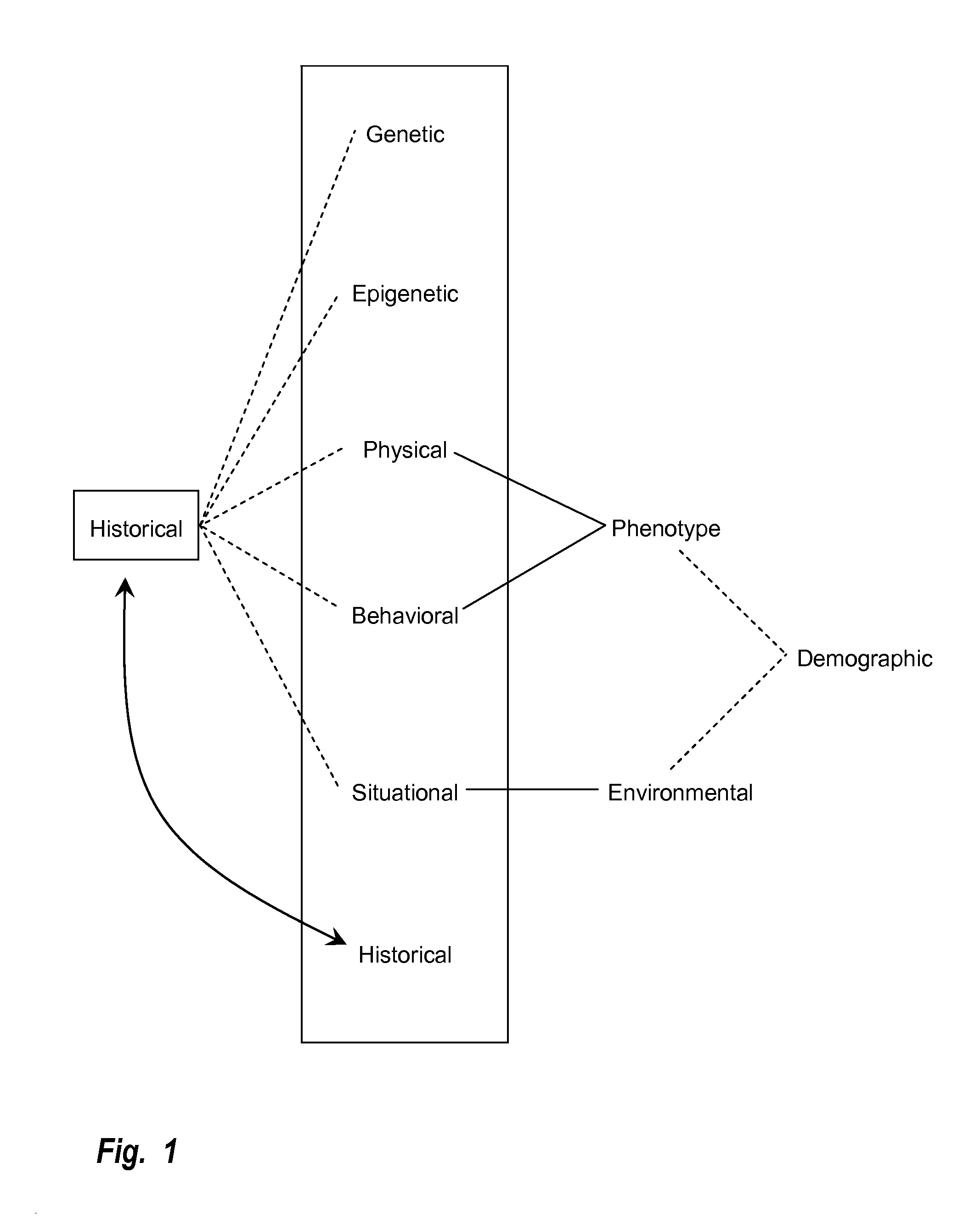Modifiable attribute identification
a technology of attribute identification and modification, applied in the field of modificationable attribute identification, can solve the problems of low resolution level of data typically used, inability to deter mining complex combinations of attributes, and inability to identify attributes, etc., to achieve the effect of improving individualized diagnosis, high complexity combinations, and resolution
- Summary
- Abstract
- Description
- Claims
- Application Information
AI Technical Summary
Benefits of technology
Problems solved by technology
Method used
Image
Examples
Embodiment Construction
[0040]There are approximately 25,000 genes in the human genome. Of these, approximately 1,000 of these genes are involved in monogenic disorders, which are disorders whose sole cause is due to the properties of a single gene. This collection of disorders represents less than two percent of all human disorders. The remaining 98 percent of human disorders, termed complex disorders, are caused by multiple genetic influences or a combination of multiple genetic and non-genetic influences, still yet to be determined due to their resistance to current methods of discovery.
[0041]Previous methods using genetic information have suffered from either a lack of high resolution information, very limited coverage of total genomic information, or both. Genetic markers such as single nucleotide polymorphisms (SNPs) do not provide a complete picture of a gene's nucleotide sequence or the total genetic variability of the individual. The SNPs typically used occur at a frequency of at least 5% in the p...
PUM
 Login to View More
Login to View More Abstract
Description
Claims
Application Information
 Login to View More
Login to View More - R&D
- Intellectual Property
- Life Sciences
- Materials
- Tech Scout
- Unparalleled Data Quality
- Higher Quality Content
- 60% Fewer Hallucinations
Browse by: Latest US Patents, China's latest patents, Technical Efficacy Thesaurus, Application Domain, Technology Topic, Popular Technical Reports.
© 2025 PatSnap. All rights reserved.Legal|Privacy policy|Modern Slavery Act Transparency Statement|Sitemap|About US| Contact US: help@patsnap.com



